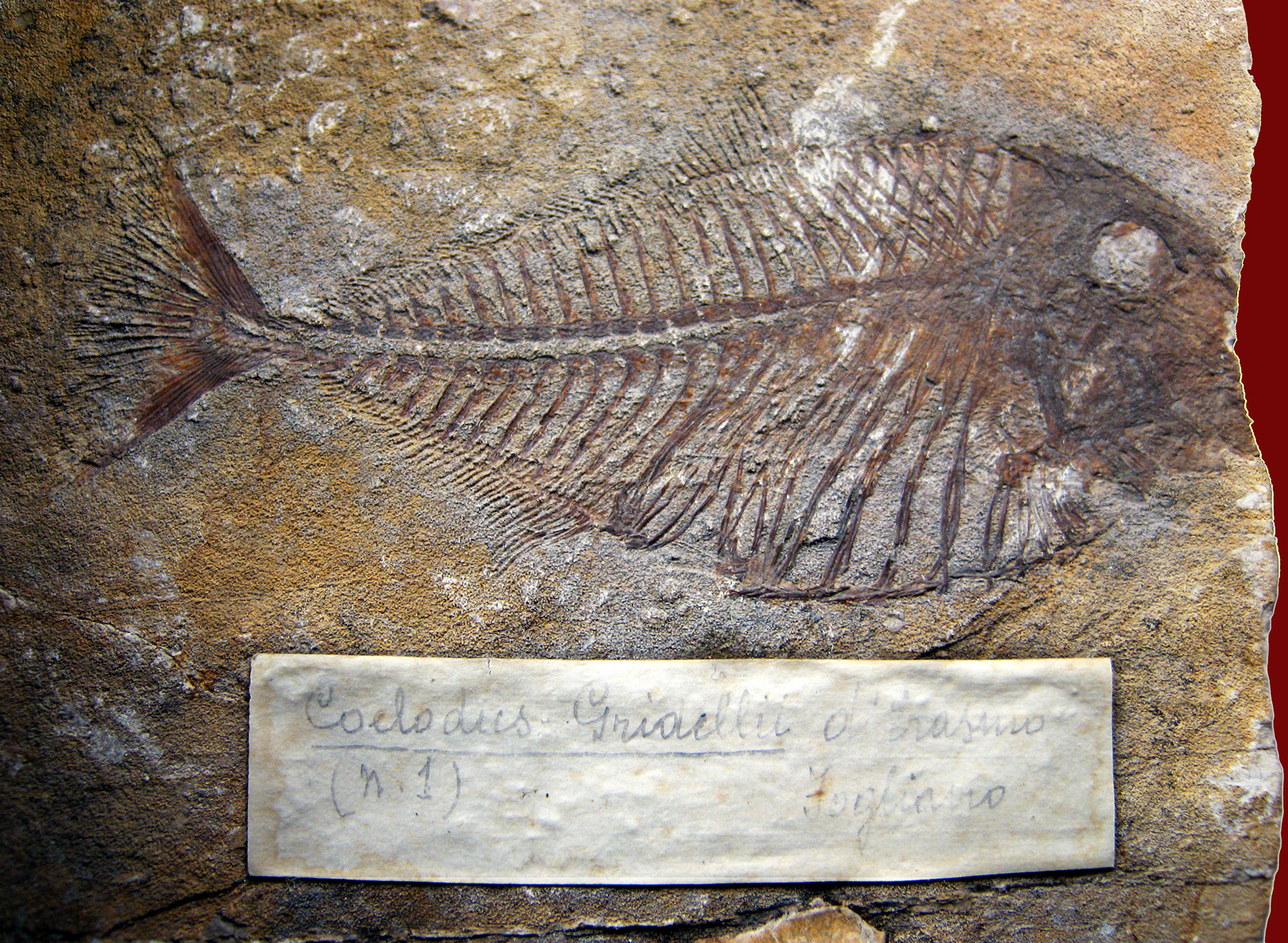STUDIES ON PYCNODONT FISHES (II): REVISION OF THE SUBFAMILY PYCNODONTINAE, WITH SPECIAL REFERENCE TO ITALIAN FORMS
DOI:
https://doi.org/10.13130/2039-4942/13514Keywords:
Actinopterygii; Cretaceous; Fish Evolution; Italy, Neopterygii; Phylogenetic Relationships; Pycnodontiformes; Pycnodus; Tethys.Abstract
The diagnosis, composition, and phylogenetic relationships of the European subfamily Pycnodontinae are revised; its record is pushed back from the Cenozoic into the Mesozoic. The Pycnodontinae is confirmed as a monophyletic group. It is diagnosed by: thin, laminar supraoccipital exposed all along the posterior border of the skull roof; cleithrum with two posterior expansions framing the notch for the pectoral fin; reduction in the ossification of the flank scales (clathrate pattern); reduction of the preopercular into a very low bone, never higher than the exposed, ornamented portion of the dermohyomandibular; and presence of a bifid cloacal scale. The subfamily includes the tribe Pycnodontini (Pycnodus + Oropycnodus), Polazzodus, Sylvienodus, and Tergestinia. The former “Coelodus” gridellii is moved to Polazzodus gridellii n. comb. The Italian genera, Pycnodus, Polazzodus, and Tergestinia, form a monophyletic group together with the French Oropycnodus. The present analysis shows that Polazzodus, Sylvienodus, and Tergestinia are pycnodontin fishes, but. Haqelpycnodus, Libanopycnodus, Scalacurvichthys, and Sigmapycnodus do not belong to the Pycnodontinae. “Pseudopycnodus” and “P. nardoensis” are considered nomina dubia. This revision has revealed new aspects of the last known diversification in the evolutionary history of the Pycnodontiformes, showing that the group was still thriving in the Western Tethys during the Late Cretaceous. For the present analysis, additional arguments involving ontogenetic restrictions are provided to favour ordering multistate characters in pycnodonts.

Downloads
Additional Files
Published
Issue
Section
License
The journal allow the author(s) to hold the copyright without restrictions.






